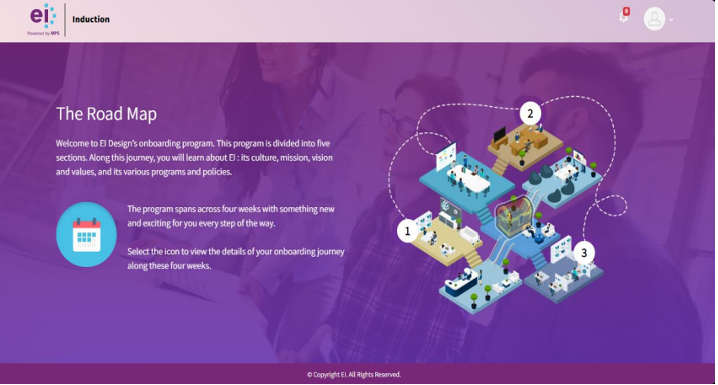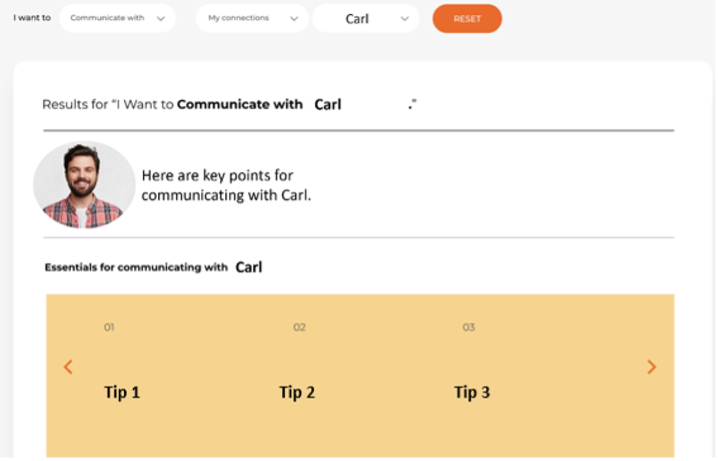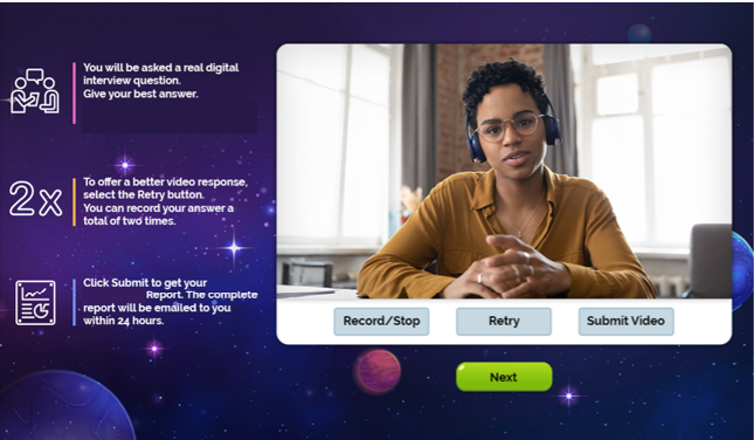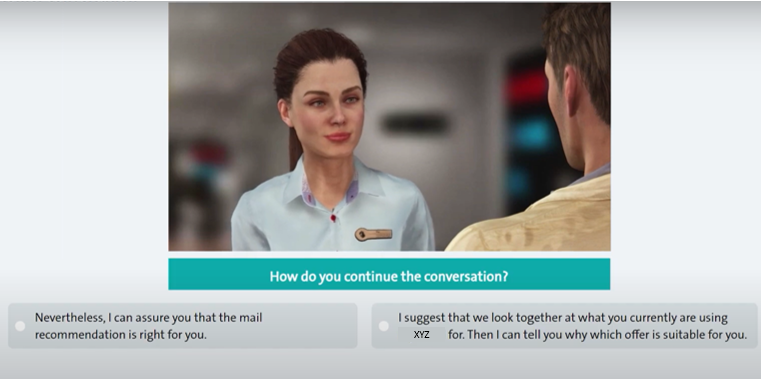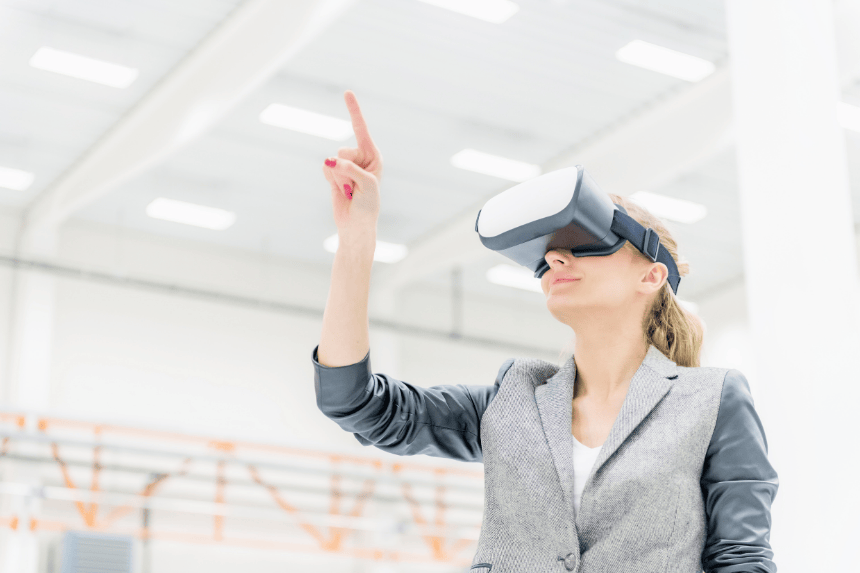
In a futuristic and evolving business environment, fostering a culture of continuous learning and development is vital for organizational success. This approach not only empowers employees to stay ahead of industry trends but also drives innovation, adaptability, and resilience. By investing in continuous learning, organizations can build a skilled, future-ready workforce that thrives on growth and change, ensuring sustained competitive advantage and long-term success to transform your organization into a dynamic learning powerhouse.
What is Continuous Learning?
Continuous learning is the ongoing pursuit of knowledge for personal and professional growth, essential for staying current with industry trends and technologies. Modern L&D programs can promote this through AI-driven platforms, virtual reality, and microlearning. These tech-based solutions create engaging, personalized learning experiences, helping employees adapt and thrive in a changing world.
Importance of Continuous Learning and Development in the Workplace
Continuous learning is crucial for organizations to remain competitive and innovative. It helps employees stay relevant, enhances job satisfaction, and supports career advancement. For organizations, it means having a workforce equipped to handle changing market demands, leading to improved performance and business outcomes.
A culture of continuous learning is essential for creating a skill-based organization where employees are valued for their abilities and contributions. This culture ensures that skills are continuously developed and aligned with business needs, promoting a future-ready workforce capable of driving the organization forward. Investing in continuous learning fosters a growth mindset, yields significant ROI, enhances employee performance, and reduces turnover.
Moreover, offering continuous learning opportunities aligns with employees’ aspirations for growth and development, leading to higher retention rates. Employees who see clear paths for advancement and skill enhancement are more likely to stay with the organization, feeling valued and motivated. As skills are continuously upgraded and aligned with strategic objectives, organizations can more effectively navigate market changes and seize new opportunities, ensuring long-term success and sustainability.
Benefits of Continuous Learning and Development
-
Enhanced Employee Performance:
Continuous learning equips employees with the latest skills and knowledge, enabling them to perform their jobs more efficiently and effectively. According to LinkedIn’s Workplace Learning Report, 94% of employees would stay at a company longer if it invested in their learning and development.
-
Increased Employee Engagement and Retention:
Offering learning opportunities demonstrates a commitment to employee growth, leading to higher engagement and lower turnover rates. A Gallup report found that organizations with a strong learning culture have employee engagement and retention rates that are 50% higher than those without.
-
Improved Innovation:
A culture of learning encourages creativity and the application of new ideas, driving innovation within the organization. Research by Deloitte shows that companies with continuous learning cultures are 46% more likely to be first to market and 92% more likely to innovate.
-
Adaptability:
Continuous learning helps employees adapt to new technologies and processes, ensuring the organization remains agile in the face of change. A study by IBM revealed that 84% of employees in best performing organizations are receiving the training they need to stay updated on the latest technological advancements.
-
Attracting Talent:
Organizations known for their commitment to employee development attract top talent who are eager to grow and advance their careers. According to a survey by Glassdoor, 87% of employees expect their employer to support them in balancing work and personal commitments, which includes offering learning and development opportunities.
Driving Skilling Strategy with Continuous Learning and Development
Every organization must have a workforce that is always equipped to meet evolving business challenges, thus maintaining competitive advantage and fostering innovation. But what is the best way to do so? Here are a few critical ones I outline.
Understanding Business Objectives
Before implementing a continuous learning strategy, it is crucial to understand the organization’s business objectives. This ensures that learning programs are aligned with the goals and can contribute to achieving them effectively.
-
- Training Needs Analysis: A training needs analysis helps identify the skills and knowledge gaps within the organization. This analysis provides a clear understanding of what learning initiatives are needed to bridge these gaps.
- Identifying Skill Gaps: The process involves assessing the current capabilities of employees and comparing them with the skills required to meet future business objectives. This process helps prioritize learning and development efforts.
- Aligning Learning Programs to Business Goals: This ensures that the training provided is relevant and supports the organization’s strategic direction. The alignment maximizes the impact of learning initiatives on business performance.
Understanding Your Learners and Developing a Growth Mindset
-
- Understanding Learner Needs: This involves considering employees’ current skill levels, career aspirations, and preferred learning styles.
- Understanding Learner Motivations: Recognizing what motivates learners can enhance engagement and participation in learning programs. Motivations can vary from career advancement to personal interest in a subject.
- Factoring for a Multigenerational Workforce: Typically includes employees from different age groups, each with unique learning preferences and experiences. Tailoring learning programs to accommodate these differences ensures inclusivity and effectiveness.
- Building a Growth Mindset: Being able to drive this mindset encourages employees to view challenges as opportunities for development. This mindset fosters resilience and a willingness to learn and grow continuously.
- Developing Lifelong Learners: Encouraging lifelong learning means fostering a culture where employees are motivated to continually seek knowledge and skill enhancement throughout their careers. This approach supports ongoing personal and professional growth.
Integrating the Right Learning Strategies
-
- Immersive Learning: Immersive learning techniques, such as AR, VR, XR, AI, provide interactive and engaging experiences that enhance knowledge retention and application in a life-like simulated environment.
- Personalized Learning: Personalized learning tailors educational experiences to individual needs and preferences, ensuring that each employee receives relevant and effective training.
- Experiential Learning: Experiential learning involves hands-on experiences that allow employees to apply new skills in real-world scenarios. This approach reinforces learning and improves skill acquisition.
- Microlearning: Microlearning delivers content in small, manageable segments, making it easier for employees to absorb and retain information. This method is particularly effective for busy professionals.
- Leveraging Different Content Types: Utilizing a variety of content types, such as videos, podcasts, articles, and interactive modules, caters to different learning preferences and keeps training engaging.
- Leveraging AI: AI can personalize learning experiences, recommend relevant content, and provide insights into learning progress and effectiveness. AI-driven platforms enhance the efficiency and impact of learning programs.
Creating Learning Opportunities and Driving Learning
-
- Self-Directed Learning: Empowers employees to take control of their development. Providing access to resources and tools supports this approach.
- Learning Journeys: Guides employees through a series of learning experiences that build on each other, ensuring comprehensive skill development.
- Learning in the Flow of Work: Provides learning opportunities into daily work routines allows employees to acquire new skills without interrupting their workflow. This approach makes learning more practical and immediately applicable.
- Enabling Learning Anytime, Anywhere Through Technology: Enables flexible learning by providing access to training materials anytime and anywhere. Mobile learning platforms, e-learning courses, and virtual classrooms support this flexibility.
- Supporting Learners at the Moment of Need: Ensures that employees can access information and support exactly when they need it. This just-in-time learning approach enhances productivity and problem-solving.
- Informal Learning: Encourages informal learning through activities such as mentoring, peer learning, and collaborative projects to foster a culture of continuous knowledge sharing and development.
- Social and Collaborative Learning: Leverages the collective knowledge of the organization. Platforms that facilitate discussion, knowledge sharing, and collaboration enhance learning experiences.
Measuring the Impact
-
- Measuring Engagement: Tracking engagement metrics, such as participation rates and completion rates, helps evaluate the effectiveness of learning programs and identify areas for improvement.
- Employee Performance: Assessing changes in employee performance before and after training provides insights into the impact of learning initiatives on individual productivity and skill development.
- Business Performance: Evaluating the correlation between learning programs and business performance metrics, such as revenue growth, customer satisfaction, and market share, demonstrates the broader impact of continuous learning.
- NexGen ROI: Next-generation ROI metrics consider both tangible and intangible benefits of learning programs, such as improved employee morale, enhanced innovation, and increased agility. This includes both financial and non-financial impacts.
How Does Continuous Learning in the Workplace Look Like?
Continuous learning in the workplace involves a combination of formal and informal learning activities. It includes structured training programs, self-directed learning, on-the-job experiences, and opportunities for collaboration and knowledge sharing. Technology plays a crucial role in enabling flexible and accessible learning.
5 Compelling Examples of Continuous Learning in the Workplace
While EI works to drive a culture of continuous learning for all our customer organizations, here are a notable few that have made the mark and depicted the desired impact.
Example 1 – Structured Training Program:
EI’s onboarding program takes a Blended approach to equip a hybrid workforce with the knowledge and skills they need, fostering a foundation for continuous learning. This engaging and immersive program utilizes a multi-level Gamified learning journey with over 22 Microlearning formats deployed through a portal.
Example 2 – Online Learning Platform:
To build cultural intelligence skills for effective communication, we crafted an adaptive learning platform. This innovative platform personalizes resources and learning pathways based on the names of individuals learners wish to interact with, fostering continuous skill development.
Example 3 – Mentorship and Coaching:
Assignments submitted through an LXP are evaluated by peers and managers against specific parameters. An example of assignment includes recorded audio or video calls to assess client pitching skills. This approach not only facilitates knowledge transfer but also continuous learning through real-world guidance and support from experienced professionals.
Example 4 – Learning Experience Platform (LXP):
EI’s very own Learning Experience Platform, e-Nable, is designed for the modern learner and continuously evolving L&D Initiatives to ensure that learning indeed moves acquisition to application to performance, with a measurable impact. The LXP offers personalized learning paths that are aligned to business objectives and comprehensive progress tracking to measure ROI.
Example 5 – Immersive Learning Environment:
To help learners improve their customer communication skills, we crafted an AI-driven role-playing simulation that immerses learners in different scenarios where they make decisions in a simulated, risk-free environment. Participants engage with 3D avatars in realistic settings, receiving immediate feedback to enhance their skills.
Parting Thoughts
Building a culture of continuous learning and development is essential for creating a future-ready, skill-based organization. By understanding business objectives, identifying skill gaps, aligning learning programs with goals, and integrating the right learning strategies, organizations can foster a growth mindset and develop lifelong learners. Measuring the impact of these initiatives ensures that the organization remains agile, innovative, and competitive in the ever-evolving business landscape.
Download this eBook for strategies and insights to foster a learning culture and drive continuous learning in your organization.
